Kimchi Gyoza Nabe is a Korean-inspired Japanese hot pot filled with succulent Japanese dumplings, spicy kimchi, tender vegetables, and hearty mushrooms. It’s a simmering bowl of savory deliciousness!
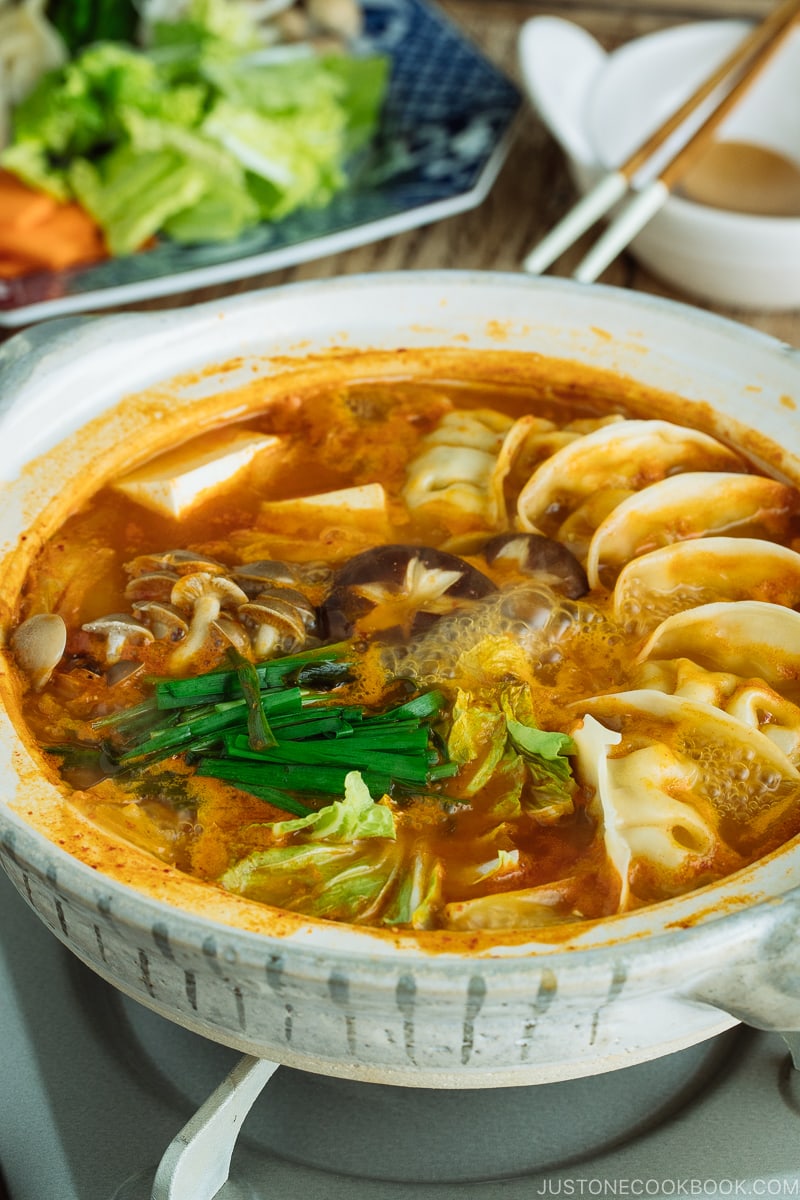
Kimchi Gyoza Nabe (キムチ餃子鍋) is a comfort dish filled with Japanese ingredients cooked in a Korean-inspired, spicy kimchi base. I love it since you can quickly throw in gyoza (Japanese dumplings), tofu, vegetables, and mushrooms to make this hot and sour soup.
This hot pot is packed with flavorful ingredients and it’s a perfect dish all year round when you need that satisfying kick of spice to warm you up.
Table of contents
What is Gyoza Nabe?
In a nutshell, Gyoza Nabe (餃子鍋) is like a dumpling (wonton) soup, except the dumpling here is Japanese gyoza. If you search Gyoza Nabe in Japanese, there are many variations – with different types of soup broth and different hot pot ingredients. Since this dish is not considered “traditional” Japanese food, make it with your favorite Japanese ingredients!
This Gyoza Nabe is totally my version that I came up with on a whim (but don’t worry, I have tested it a few times to make sure this recipe will absolutely hit the spot). Instead of a simple clear broth commonly used in Japanese hot pot, my recipe features a delicious spicy broth that richly infuses its flavor into the savory ingredients. You can also make this Gyoza Nabe with a kimchi soup base, or try one of these variations that might be fun for you to discover.
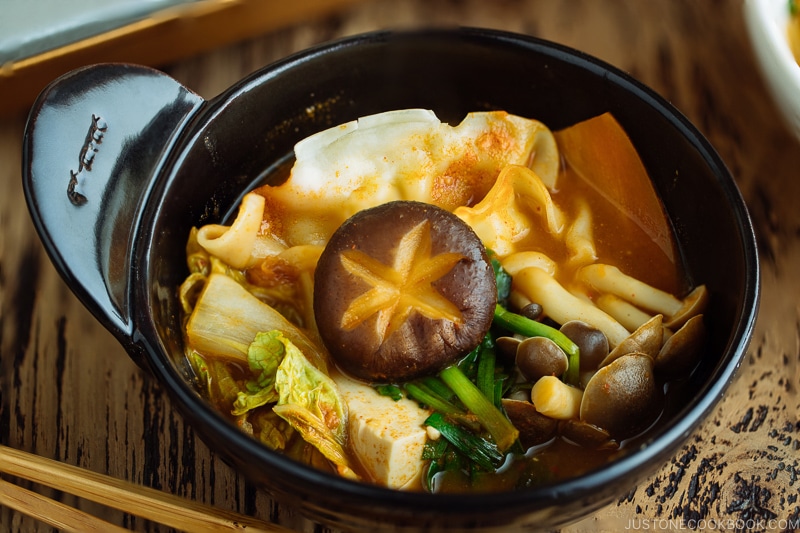
Soup Variations
Soup base:
- Awase dashi
- Kombu dashi (vegetarian and vegan)
- Chicken broth
Flavor Variations:
- Kimchi
- Miso
- Soy sauce
- Soy milk
- Tomato and more!
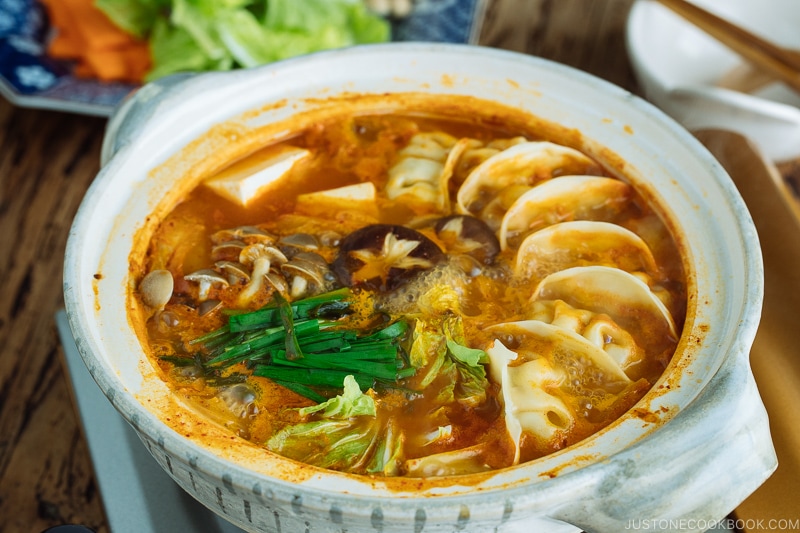
Hot Pot Ingredient Ideas
- Gyoza (pork, chicken, vegetables) (homemade gyoza recipe and gyoza wrapper)
- Meat – pork belly, thinly sliced beef/pork loin, meatballs, and chicken wings
- Tofu
- Fish cakes – chikuwa and kamaboko
- Napa cabbage
- Chinese chives (garlic chives)
- Shungiku (tong hao or garland chrysanthemum)
- Carrot
- Negi (long green onion) or green onions
- Leeks
- Bok choy
- Bean sprouts
- Shirataki noodles
- Mushrooms – shiitake, enoki, and shimeji
- Ramen noodles or steamed rice for enjoying the flavorful leftover soup!
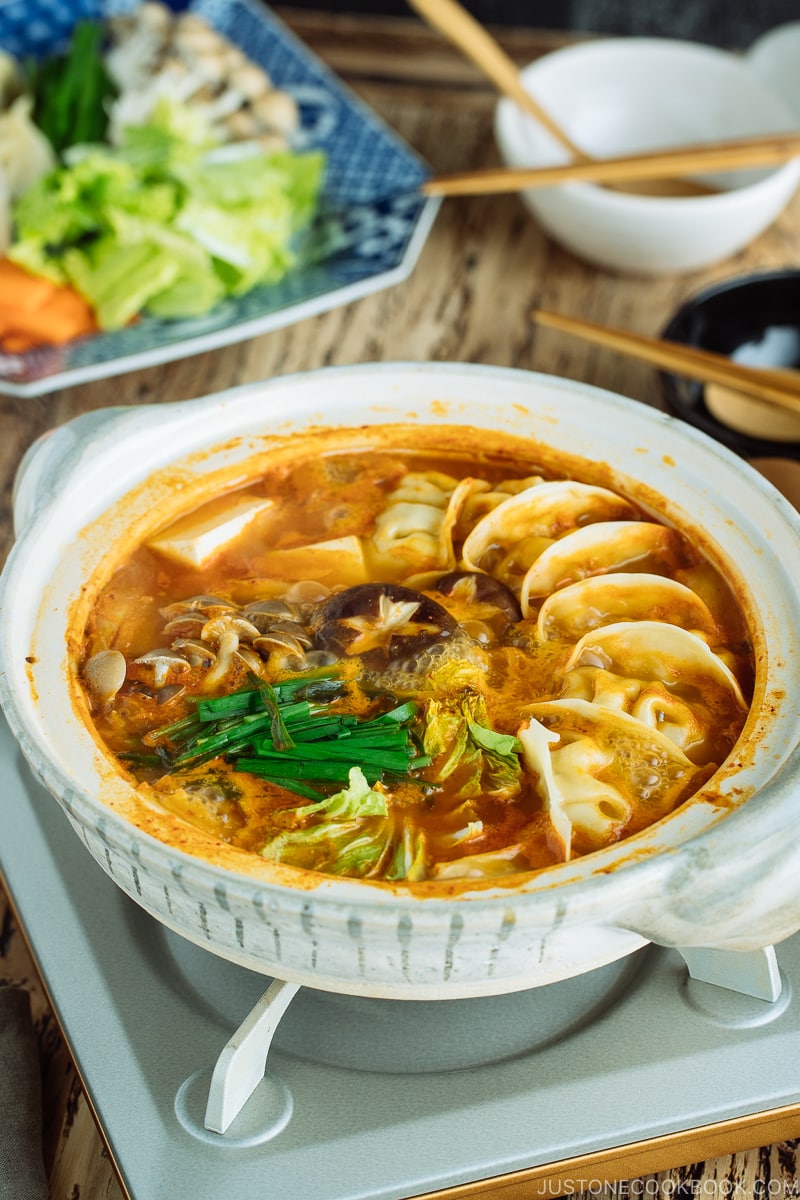
Cooking Tips
1. Dissolve miso completely
When you work with miso in a soup dish, make sure to completely dissolve miso in a ladle first before releasing miso into the soup. If you drop miso paste in the big pot of soup, you won’t know if the miso has been completely dissolved. You may end up adding more miso thinking that the soup doesn’t have much taste. Also, each brand of miso has a different level of saltiness, so please always taste the soup and adjust the flavor according to your liking.
2. Cook the dense ingredients first
If you want to enjoy the hot pot with all the ingredients being cooked at the right texture, you have to cook in 2 separate stages. Throw in root vegetables first, and then add in leafy vegetables when dense ingredients are almost tender. This way both the leafy vegetable and root vegetables will retain their proper texture. Another tip is to cut the ingredients into similar thicknesses and sizes so they’ll take roughly the same amount of time to cook.
3. Don’t overcook the gyoza
Whenever I make this, it’s a “fast food” recipe that I can make very quickly to feed my family. For me, I almost always use frozen gyoza – either homemade gyoza which I keep in the freezer or pre-made frozen gyoza from the grocery stores (Trader Joe’s has frozen pork or chicken gyoza which we like).
You don’t need to defrost, just add the frozen gyoza in the hot soup. Remember to add gyoza when all the ingredients are almost cooked through. Don’t cook the gyoza too long as the gyoza skin gets soggy when it’s soaked in the soup for too long. The overcooked gyoza skin could break easily and its filling may slip out.
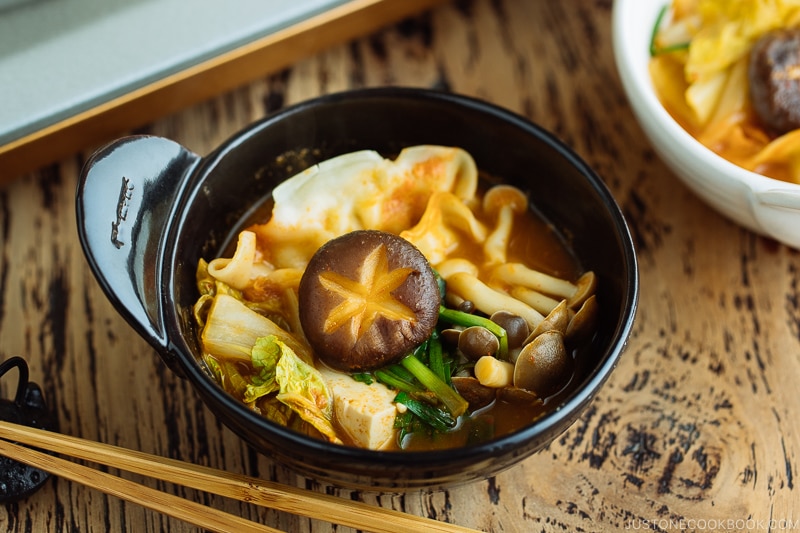
How to Enjoy Kimchi Gyoza Nabe
We enjoy the hot pot placed on the portable gas stove set at the dining table. It’s fun to eat and cook at the table as you can have a conversation with your family or friends while enjoying delicious food. For this recipe, there will be plenty of soup available for you to make it into a noodle soup by adding ramen noodles to the broth. You can also add steamed rice to go with the spicy soup.
If you don’t have a donabe, Japanese earthenware pot, you can make this dish in a regular pot. So what are you waiting for? Simply chop the veggies and throw in gyoza and you’ll have a mouth-watering meal ready in 30-40 min from start to finish. You’ll be surprised by how easy it is to put together this scrumptious meal. Enjoy!
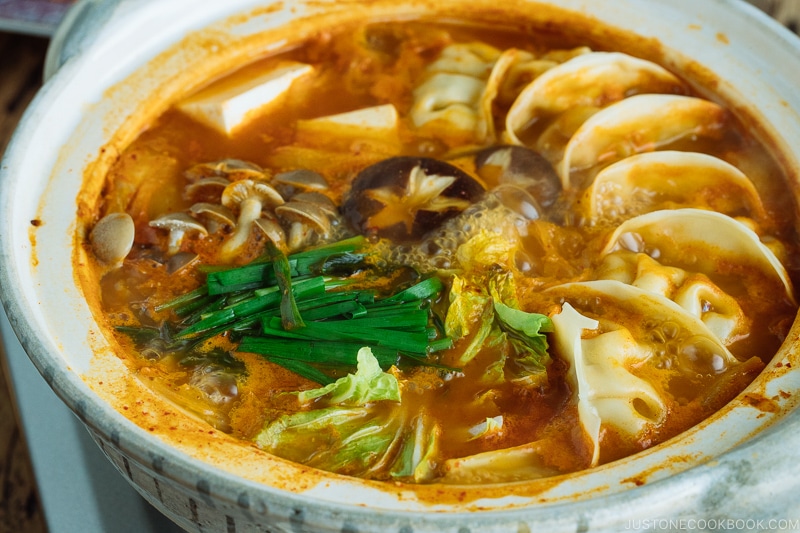
Wish to learn more about Japanese cooking? Sign up for our free newsletter to receive cooking tips & recipe updates! And stay in touch with me on Facebook, Pinterest, YouTube, and Instagram.
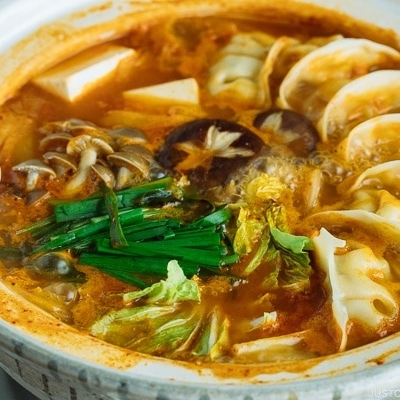
Kimchi Gyoza Nabe
Video
Ingredients
- ¼ onion
- 1 Tokyo negi (naga negi; long green onion)
- 4–6 leaves napa cabbage
- 1–2 inches daikon radish
- 2 inch carrot
- 5 stalks garlic chives (Chinese chives or Nira)
- 1 package shimeji mushrooms (3.5 oz, 100 g)
- 2 shiitake mushrooms
- 7 oz soft/silken tofu (kinugoshi dofu) (½ block)
- 2 tsp toasted sesame oil
- 10 pieces gyoza (I used frozen gyoza; or make my homemade Gyoza recipe)
For the Hot Pot Soup
- 1 cup kimchi (for vegan kimchi, you can make my friend Seonkyoung‘s recipe)
- 1 Tbsp sake
- 2 tsp gochujang (Korean chili paste)
- 1 tsp gochugaru (Korean pepper flakes)
- 2 tsp sugar
- 4 cups chicken stock/broth (use kombu dashi or shiitake dashi for vegan/vegetarian)
- 2 tsp soy sauce
- 2 Tbsp miso
- ¼ tsp Diamond Crystal kosher salt
Instructions
- Gather all the ingredients.

- Cut ¼ onion into wedges and then cut them half.

- Cut the white part of 1 Tokyo negi (naga negi; long green onion)

- Cut 4–6 leaves napa cabbage into small pieces.

- Cut 1–2 inches daikon radish into quarters lengthwise then thinly slice them.

- Cut 2 inch carrot into thin slabs and cut them in half.

- Cut 5 stalks garlic chives (Chinese chives or Nira) into 2-inch (5-cm) pieces.

- Discard the bottom of 1 package shimeji mushrooms and 2 shiitake mushrooms. Optionally, you can cut a flower pattern on the shiitake mushroom caps called shiitake hanagiri.

- Cut 7 oz soft/silken tofu (kinugoshi dofu) into roughly 1½-inch (4-cm) cubes. Tip: It’s harder to fish out from the hot pot if you cut the cubes too small.

- Heat 2 tsp toasted sesame oil in a hot pot over medium heat. Add the onion and cook until it’s coated with the oil.

- Add 1 cup kimchi and stir-fry with the onion and Tokyo negi.

- Add 1 Tbsp sake and 2 tsp gochujang (Korean chili paste).

- Add 1 tsp gochugaru (Korean pepper flakes) and 2 tsp sugar. Mix it all together well.

- Add 4 cups chicken stock/broth, and cover the lid to bring to simmer.

- Once simmering, lower the heat to medium low. Add 2 tsp soy sauce and 2 Tbsp miso. It’s best to dissolve the miso in a ladle with a small amount of soup first instead of dropping the miso in the pot and not know if it has dissolved completely. Taste the soup and adjust the taste by adding salt (I added ¼ tsp Diamond Crystal kosher salt), if necessary.

- Add the hard vegetables to the soup first, such as the daikon, carrot, tough part of napa cabbage, etc. Cook covered for 10 minutes on low heat.

- Skim off the foam and fat. Add the soft ingredients such as the leafy part of the napa cabbage, mushrooms, and tofu.

- Add 10 pieces gyoza (if frozen, no need to defrost) and the garlic chives on top.

- Cook covered over medium low heat for 5 minutes. Serve the extra ingredients on a plate and add them once you finish the ingredients in the pot.

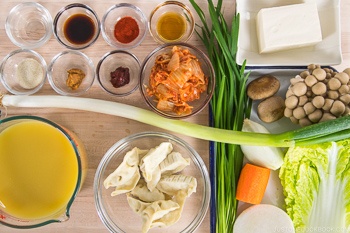
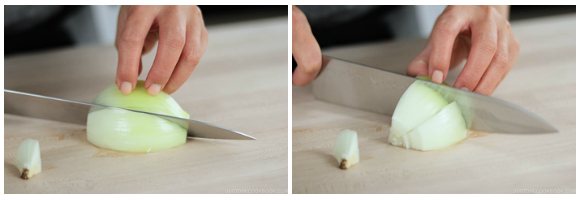
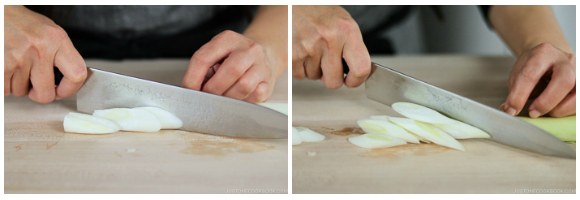
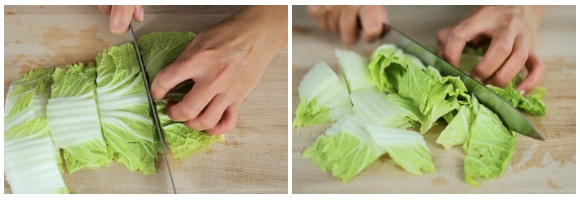

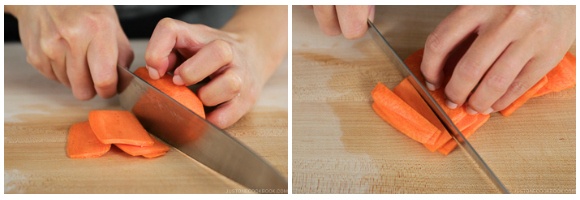
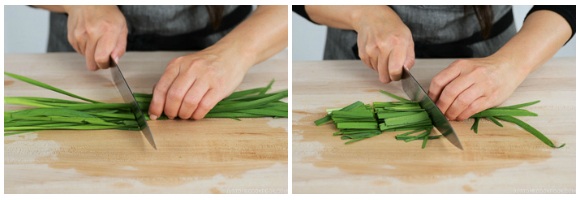

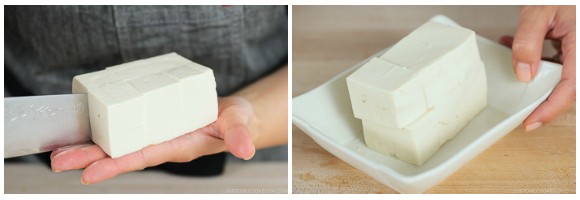
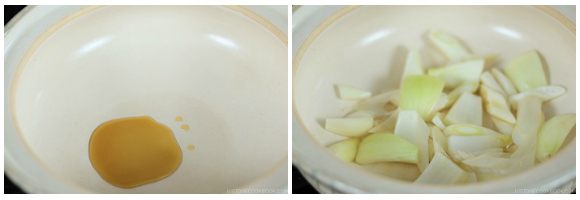
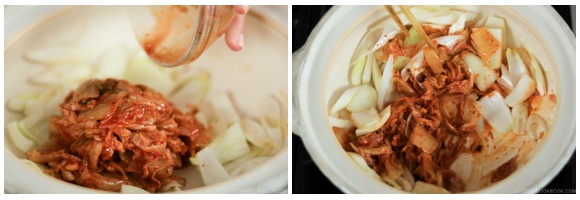
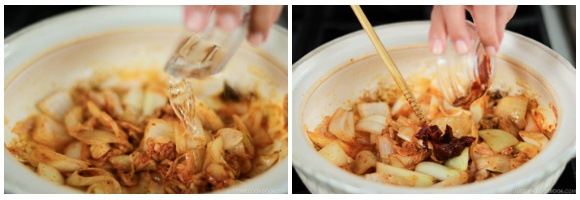
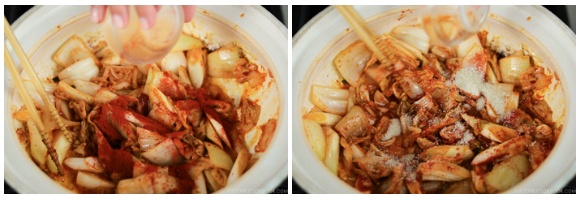
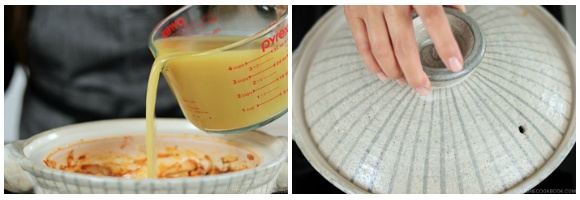

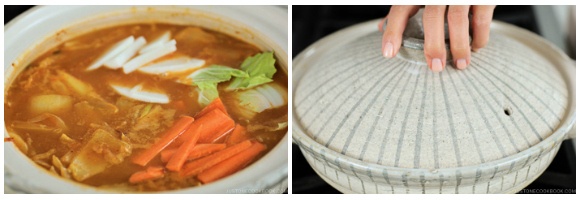
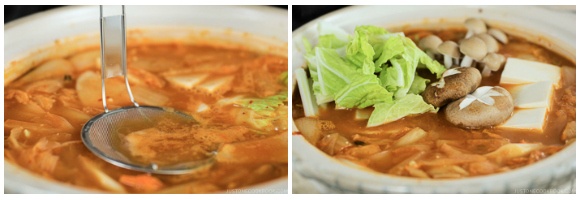












Love this recipe and have made it a couple times over the years when it gets chilly! Most recently, omitted kimchi because my partner was sick and couldn’t take any spicy and added a couple tablespoons of sesame paste instead for a sesame miso nabe. Delicious and warming.
Hello there, Julie. We’re glad you enjoyed the dish.
Here are Nami’s other Hot Pot recipes. There are many of them without the hot spice as well. We hope you will give it a try one day!☺️
https://www.justonecookbook.com/tags/hot-pot/
Thank you so much for trying Nami’s recipes!
Everyone loved it!
Hello, Janelle! Aww. We are pleased to hear that everyone enjoyed the dish.
Thank you so much for attempting Nami’s recipe, as well as for your love and support.
[…] Kimchi Gyoza Nabe (Hot Pot) キムチ餃子鍋 […]
Made this recipe with assorted root and leaf veggies, your recipe of chicken broth, homemade pork and shrimp dumplings and maangchi’s recipe of kimchi thats been aged for 2 months and wow! What a wonderful combination of flavor and texture that was. Very velvety broth. A bit salty for my taste but ill adjust next time. Thank you so much for this recipe, it warmed my home in the harsh Quebec’s winter! 🙂
Hi Annabelle! Awesome! Truly homemade dish!!
Thank you very much for trying Nami’s recipes and for sharing your cooking experience with us!🥰
Really good! made as directed subbimg sambal oelek for the gochujang, and 2 green onions for the negi and chives (separated top and bottom). it was a little on the spicy side for me so next time i will only add 1 tsp of sambal oelek. i found it made 3-4 portions. definitely mellowed out the strength of the kimchi 🙂
Hi Emily! We are so glad to hear you enjoyed Kimchi Gyoza Nabe!
Thank you very much for trying Nami’s recipe and sharing your cooking experience with us.😊
My boyfriend and I made this tonight- a cold rainy night. We really enjoyed it. We used white miso and thinly sliced beef ( in lieu of gyoza) Very customizable based on ingredients on hand. So excited for leftovers! Thank you for great recipe!
Hi Holly! We are so happy to hear you and your boyfriend enjoyed Nabe!
Thank you very much for trying Nami’s recipe and sharing your cooking experience with us!
Stay warm!☺️
Thank for all your great recipes. I just want to point out that it doesn´t work to change inte metrics. I click the button but nothing happens. I love when I don´t have to convert ounzes and inches. 🙂
Hi Mimmi! Thank you for bringing this to our attention. We made the necessary changes!
We hope this helps! 🙂
Super easy and yummy. Love that it is full of vegs and the meat portion is up to individual to exercise preference.
Hi Ling! Thank you very much for trying Nami’s recipe and for your kind feedback!
We are so happy to hear you enjoyed this Nabe! 🥰
We have many different types of Nabe on the website. We hope you check them out as well!
https://www.justonecookbook.com/tags/hot-pot/
This was so so delicious, thank you Nami! I made it with vegetarian gyoza and vegetable stock, so the meal was entirely vegan but one of the best things I’ve ever made (and I cook a lot!). I love meat but didn’t miss it at all in this recipe. Looking forward to making it again!
Hi Maria! Thank you very much for sharing your cooking experience with us! We are so glad to hear the vegan version worked well. Thank you for your kind feedback.☺️
Hi Nami, I inherited a donabe from my late grandma that hasn’t been used for years. How do you recommend I clean and use it? I would like to use it first this recipe potentially and maybe takikomi gohan. Thanks 😊
Hi Kylie,
Thank you for trying our recipe!
We normally use a mild soap to clean Donabe and make sure to dry each time.
To learn more about how to take care of Donabe, we recommend you to check out our favorite Donbe shop’s;
https://toirokitchen.com/pages/how-to-take-care-of-your-donabe
I hope this is helpful.😊
Thank you! I will check out that website 😊
Thank you! This recipe is on point! Don’t skip any soup ingredients- everything comes together nicely. The miso paste and daikon gives the broth it’s hardiness. Added a splash of sesame oil at the very end since it’s a korean based soup broth. Definitely a keeper
Aww I’m so happy to hear that you enjoyed this recipe. Thank you for your tip and kind feedback! 🙂
[…] 15. Kimchi Gyoza Nabe (Hot Pot) […]
Hi Nami
I have a question – I love kimchi but my husband doesn’t like the vinegariness; he does like spicy food, though. Does the vinegary aspect lessen in this hot pot? I would really like to make it!
regards
Susie
Hi Susie! With all the soup stock, the vinegary aspect does lessen. But those who don’t like kimchi tend to be particular about that flavor and I feel like it stays a bit, definitely not like kimchi though. How about using half or less, and add kimchi to your soup after? Maybe slowly increase the kimchi after your husband’s reaction. 🙂
Add the peeled potatoes. It has a less spicy and sour taste. It is also delicious to add udon to the soup.
Thank you for your suggestion and tip, Jared! 🙂
Are you able to refrigerate leftovers? If not so I could it all in one sitting 🙂
Hi Jonathan! Sure! I personally prefer not to add all the gyoza though. The gyoza wrappers absorb moisture and become more like wonton skin texture in wonton soup (kinda softer and break easily…). So when you cook, don’t put all of it. When you reheat and enjoy next time, you can add more gyoza. 🙂 Same goes to any leafy greens… Hope this helps!